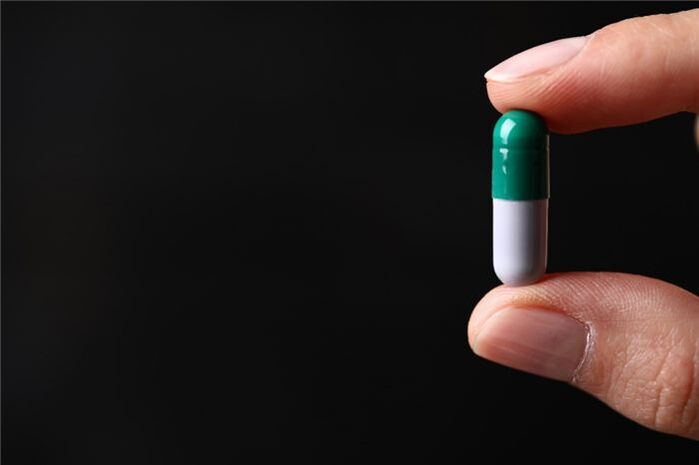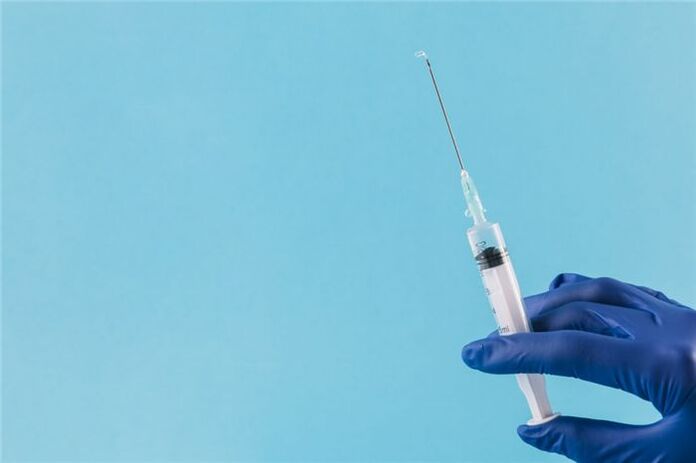In the human neck there are a large number of bundles of nerves and blood vessels that ensure the normal functioning of the brain and sensory organs. The most common cause of compression is cervical osteochondrosis, a dangerous degenerative disease of cartilage and bone tissue, accompanied by severe pain, impaired hearing, vision and cognition, and numbness. in the face and gradually lost the ability. work.
If when you look back, you are worried about pain and stiffness, frequent dizziness or weakness, it is time to think about cervical spondylosis treatment.

Do not delay the treatment of cervical osteonecrosis later.
Causes of cervical osteonecrosis
Cervical fibroids have their own characteristics, due to their anatomical structure. The vertebrae of the cervical region are smaller than the lumbar and even thoracic, and also bear a constant static load (weight of the head). During the day, the load can be expressed by maintaining the same posture - for example when reading a document, working in front of a computer. At night, the neck is also often not rested due to improper sleeping positions and uncomfortable pillows (the head "hangs" on the pillow, or is the benchmark and under pressure). As a result of this pre-pathological condition, the so-called. exercise too hard. Certain muscle groups are overstressed, and therefore require longer rest and recovery periods - but don't work them out - because the schedule hasn't been cancelled.
All of this causes ongoing tension in some muscle groups and dystrophic changes in others, and often results in the appearance of a "turtle neck" (a person stooped, while the head protrudes forward). anterior and neck form a characteristic deviation). In this situation, the weight of the head falls on the atlas, the first cervical vertebra. He is forced to bear part of the load that his neck muscles can handle during normal physical development. But the fact is that he was not at all adapted to such a task!
Additional factors that can accelerate the wear and tear of disc cartilage in the cervical spine are usually:
- age- and hormonal changes - most commonly occurring after the age of 45 (inorganic substances predominate over organic ones, reducing bone flexibility and causing their mineralization, and the destruction of bone tissue is faster than its growth);
- trauma to the neck and other parts of the spine;
- heart-related diseaes;
- congenital malformations of the musculoskeletal system and acquired postural disorders;
- low dynamics (after all, the intervertebral disc joints of the neck are the most mobile and many types of loads are necessary for their health);
- smoking and other bad habits.
Stages of cervical osteonecrosis
The stage of cervical osteonecrosis was established on the basis of diagnostic criteria. These include the patient's own sensation, palpation, assessment of neck mobility, as well as the distance between the vertebrae and other X-ray indicators. Depending on the stage of the disease, the orthopedist selects the treatment of cervical necrosis, preventive measures and, if necessary, orthopedic support.
1 degree of cervical bone necrosis
Cervical fibroids 1 degree are also known as preclinical stage. As a rule, patients ignore the first symptoms of cervical osteochondrosis, and treatment is not carried out due to their mild severity. They are attributed to fatigue after a day's work, uncomfortable sleeping positions, stress, migraines, and various ailments. Patient feels:
- stiffness in the neck, especially in the morning or after a long time in the same position;
- pain when turning the head;
- frequent headaches (including changes in weather).
At this stage of the disease, the treatment of fibroids in women is very likely - after all, their symptoms are more obvious. This is due to both the specific characteristics of work and physical activity (for example, working in the office during the day and bending over the sink or the child's homework in the evening) and the characteristics of the child. hormonal and anatomical (lower muscle and bone mass in the preclinical stage, which for women is characterized by increased pressure, numbness and whiteness of the skin (especially in the face), a tendency to faint anddizziness, nausea and some other symptoms of brain hypoxia.
Typically, patients between 45 and 65 years of age face the symptoms and treatment of cervical osteonecrosis, but with chronic fatigue, excessive physical activity, and other risk factors. Other risks, they can appear quite early - starting at age 25.
At this stage, the disease can be completely defeated with the help of therapeutic exercises, ointments for the treatment of cervical osteosarcoma, orthopedic training and normalization of the diet. nursing.
2 degrees of cervical bone necrosis
In the second stage of the disease, the height of the disc cartilage begins to decrease, which plays the role of compressing and absorbing impulses between the vertebrae. As a result, neck injuries often occur during sharp turns, jumps, or excessive loads. In addition, there are bulging (protruding) discs, lens syndrome (compression of nerve endings).
These changes cause severe pain - both in the head and neck. Concentration, speed of thought, and sensitivity of the face and hands all decrease. Patients complain of increased fatigue, irritability. At this stage, effective drug therapy for cervical necrosis is required.
3 degrees of cervical bone necrosis
Severe and acute pain frequently, which may appear in the arms, upper back, neck. One or both of the patient's arms get tired quickly. The process begins to move to neighboring joints due to a violation of the natural compensatory functions of the spine. Patients find it difficult or completely impossible to turn their head due to the increased bone formation - bone-forming substance, as well as the fact that cartilage is replaced by connective tissue. Every movement, if possible, is accompanied by a rough creak. Neck loss of mobility, muscle atrophy. Milia often form, appearing cracks on the vertebrae. There is noise in the ear.
Treatment of cervical osteonecrosis
Treatment of cervical fibroids is carried out comprehensively, taking into account the patient's age, physical condition, occupation, physical level, their lifestyle and the presence of concomitant diseases. Therefore, the appropriateness of specific therapies for the treatment of fibroids in women and men should be determined by the attending physician.

In order to effectively treat cervical spondylosis, it is necessary to have an integrated approach and follow the doctor's prescription.
Physiotherapy for cervical osteonecrosis
To relieve pain, reduce inflammation, and improve nerve conduction and brain nutrition, the following physical therapy methods are used to treat cervical spondylosis:
- ultrasound and electroacoustic therapy - has a warming effect, enhances the effect of external drugs;
- electrophoresis - enhances the effect of taken drugs, has a stimulating and warming effect on the body;
- shock wave therapy (SWT) - activates blood circulation, reduces inflammation and improves the regeneration of bone and cartilage tissues;
- electrical stimulation - improves mobility and endurance of the neck and arms, relieves pain;
- cryotherapy and ozone - relieve pain and inflammation, help reduce the dose of corticosteroid drugs;
- physiotherapy and kinesitherapy - strengthens the muscles of the neck, improves blood circulation and metabolism, maintains neck mobility;
- manual therapy and mechanical traction (traction) - helps to get rid of grip and pain;
- acupuncture - helps maintain mobility and nerve sensitivity;
- paraffin application - stimulates metabolism, relieves pain.
Nursing methods for cervical osteochondrosis are effective and advantageous - eg, hydrogen sulfide (hydrogen sulfide, radon and turpentine baths) hirudotherapy (leech treatment).
Massage in the treatment of cervical osteonecrosis
Therapy, lymphatic drainage massage and physical therapy have a positive effect on the discs, bone tissue, muscles and ligaments of the neck region. Some movements can be performed independently - for example, rubbing the neck, parotid and shoulder areas, washing the neck with the fingers and edges of the palms, tapping, stroking and stroking movements along the nape of the neck. Not redundant in the treatment of cervical spondylosis will be a circular massage behind the head, as well as a warm massage of the collarbone, shoulders and upper back. Massage is especially effective before performing therapeutic exercises. You can combine it with topical ointments to treat cervical osteochondrosis.
With degenerative cervical disease, it is recommended to use hydromassage - a physiotherapeutic technique that improves metabolism, inhibits fiber growth, helps to get rid of headaches and improves conduction. nerve transmission.
Exercise therapy for cervical osteochondrosis
The lack of adequate physical activity on the muscles of the neck and back is a major cause of the development and further progression of cervical osteochondrosis. Therefore, daily exercise is used both to prevent and cure this disease (not to treat an exacerbation of cervical osteosarcoma! ). Remember that the exercises should be done at least 3-5 times per day (of which 1 time in the morning, after waking up). All movements should be smooth, without jerks. If you feel pain during exercise, stop it and if the whole complex is causing you pain, contact an orthopedist for medical treatment of cervical osteosarcoma, co. Time to see an exercise instructor.
You can do the following exercises daily (5-7 repetitions):
- Press your palms to your forehead and stretch your neck, trying to move your palms along your forehead. Repeat this exercise for the back of the head, then for the right and left temples, respectively.
- Tilt your head back, then slowly lower, pressing your chin to your chest.
- Stand up straight and turn your head to the left as much as you can. Repeat the exercise with the right side.
- Tilt your head back and try to touch your shoulder with your ear. Repeat on both sides.
- Lower your chin to the rectangular groove and turn your head to one side first (from 5 times) then turn your head to the other side in the same way.
Warm-up for the shoulder, such as "mill", will not be superfluous. Daily exercises in the early stages of the disease help to treat cervical spondylosis without drugs.
Please note: if you have been diagnosed with osteosarcoma, you should not depict a circle with your head, because. it may cause injury.
Diet in the treatment of cervical osteonecrosis
Osteochondrosis of the cervical region can be classified as a so-called. "The disease of the whole organism. " Therefore, in the treatment of cervical spondylosis, diet has two goals: to saturate the body with nutrients and to limit substances that contribute to dehydration, mineralization of joints. and destroy them.
Therefore, in the treatment of cervical osteonecrosis, it is necessary to occupy a special place in the diet:
- Poultry, lean beef, game meat, liver and offal. .
- Seafood - fish, shellfish, crustaceans, edible algae.
- Eggs and dairy products.
- Whole grains and legumes - oats, wheat (including sprouted), brown rice, beans, peas.
- Vegetables - carrots, spinach, bell peppers, broccoli, lettuce and others.
- Fruits - apricots, bananas, citrus, plums, apples, avocados, peaches, pomegranates.
- Nuts.
- Any berries (fresh, dried, frozen) and dried berries.
But sauces, savory dishes, fast food, semi-finished products and sausages should be completely excluded. It is important to reduce white bread, potatoes, sweets (except dark chocolate and dried fruit), carbonated drinks and "from the bag" coffee on the menu - this will reduce the need for cashews. Drug treatment of degenerative cervical spine disease.
Preparations for osteonecrosis
Conservative treatment of osteonecrosis includes various treatment measures - from massage and diet to therapeutic exercises and physical therapy. All of them help to improve the patient's condition and prevent the development of complications. But the leading method was and still is the use of pharmaceuticals for bone resorption.

Preparations for bone resorption - the main way to fight this disease.
Medical treatment goals
Drug treatment of osteonecrosis is very effective in the early stages of the disease, with the right treatment regimen it can completely cure or permanently eliminate its most bothersome symptoms. In the later stages, medical care can stop the disease.
Osteonecrosis drugs are designed to affect the disease not only symptomatically, but also to eliminate its cause systematically. Therefore, therapy is carried out in the following directions:
- numb the affected area;
- eliminates inflammation and alleviates the acute phase of the disease;
- restore microcirculation in the affected tissues;
- improves metabolism and protects cartilage from further destruction (for example, by free radicals);
- regeneration of cartilage tissue in intervertebral discs;
- restore mobility of the vertebral joints.
In cases where the disease is accompanied by depression or emotional stress, therapy is also aimed at restoring a normal psychological state.
During the period of remission, the patient can take the drug without medication or take it according to the schedule with a prophylactic dose.
Effective drug for the treatment of osteonecrosis: release form
For the treatment of osteonecrosis, agents of external and internal use are used. The choice of the form of drug release depends on the habits and lifestyle of the patient, the concomitant diagnosis and the stage of the disease.
Tablets and capsules
Tablets and capsules for bone resorption are the most commonly released form. They have high bioavailability and systemic effects on the body.
Tablets should be taken directly with meals, usually 2 times a day.
The main disadvantage of tablets (especially non-steroidal anti-inflammatory drugs) is that they act directly on the mucous membrane of the digestive system. These drugs are not recommended for long-term use due to the risk of stomach inflammation and ulcers. They must be taken under medical supervision.

It is possible to start drug treatment for osteonecrosis only after consulting a doctor.
Ointments, gels, creams and solutions for compresses
Topical products are great for local anesthesia, inflammation, and swelling. They are considered much safer for the body than pills, since they do not come into contact with the mucous membranes and are absorbed into the bloodstream in small amounts. Topical preparations have no cumulative effect, are easy to use, and usually do not require a prescription. They can be used continuously, not in courses. Among the forms of external release, patches are noticeable - they are simply fixed on the affected area of \u200b\u200b the spine, they can be worn under clothes all day. .
Ointments, gels and creams are the best drugs for the treatment of osteonecrosis for patients with contraindications to taking drugs (with steroid and non-steroidal anti-inflammatory components) from the heart and endocrine system.
Solution for injectables
Drugs for intravenous and intramuscular administration have maximum bioavailability and reduced effect on the mucous membrane of the gastrointestinal tract, since the active substances enter the bloodstream directly.
Injections for osteonecrosis can quickly stop the exacerbation of the disease, reduce pain, swelling, and restore the sensitivity of nerve endings. Injections are an excellent alternative to oral medications for patients with lactose intolerance. After all, most NSAIDs in tablets are lactose-containing drugs.
With especially severe back pain, the drug is administered as a blocker - directly into the nerve. The effect of such an injection lasts up to 3-4 weeks, but qualified medical personnel should perform the procedure due to the blockade close to the spine.

What drugs are used for osteonecrosis?
Drugs for osteonecrosis do not differ only in the form of release. They are also divided into the following pharmacological groups.
Anti-inflammatory drugs to treat osteonecrosis
The work of non-steroidal anti-inflammatory drugs in bone resorption is based on inhibiting the production of prostaglandins - hormone-like substances that cause inflammation and pain in the affected areas. Non-steroidal anti-inflammatory drugs can quickly eliminate pain and heat on the skin, restore local metabolism, reduce swelling, discomfort and impaired sensitivity, and reduce pressure on the nerve roots of the patient. Spine.
Non-steroidal anti-inflammatory drugs for the treatment of osteonecrosis are produced in various dosage forms - capsules and tablets, gels and creams, solutions for intramuscular, intravenous or s / c. NSAID treatment with osteonecrosis often involves a combination of several different forms. For example, pills are used as primary therapy, gels and ointments "quench" residual inflammation, and injections are needed to relieve pain. The patches help reduce inflammation at all stages of treatment.
Steroid (hormonal) anti-inflammatory drugs to treat osteonecrosis are rarely used - mainly in the most severe cases, when other treatments have not yet worked.
Chondroprotectors
With osteonecrosis, the spring function of the disc is impaired, which is directly dependent on the volume of the cartilage tissue and its elasticity. To maintain sufficient cartilage thickness, the body must regenerate chondrocytes (chondrocytes) at a rate comparable to their destruction. But with dehydration, unbalanced nutrition, stress, metabolic or anatomical disorders, the rate of chondrocyte breakdown increases, and new cells grow slow or unsafe. To protect cartilage and restore its normal growth rate, you should take special products based on glucosamine and chondroitin - chondroprotectors. Cartilage-protective drugs for the effective treatment of osteonecrosis can stabilize the state of cartilage, prevent further destruction of cartilage and, subject to all medical recommendations, even help restore cartilage cells. chondrocytes are lost.
For a lasting effect, chondroprotectors (in the form of tablets, injections or external agents) must be taken for life, in courses of 3-6 months.
Prepare to warm up
To eliminate discomfort in osteonecrosis, the so-called. warming medicine. They are:
- dilates blood vessels of the skin, inhibits the transmission of pain impulses to the brain;
- improves blood microcirculation in connective tissue;
- distract the patient from discomfort.
When applying irritating drugs, the greatest effect is observed after half an hour, and the analgesic effect lasts for 2-4 hours. Locally raised skin temperature is normal.
The list of drugs for the treatment of osteonecrosis includes ointments, creams, gels and tinctures based on:
- camphor (camphor ointment);
- resin;
- benzyl nicotinate;
- nonivamide;
- capsaicin (chili tincture);
- venom of bees and snakes.
Most of these drugs have a combination ingredient - for example, bee venom and an NSAID or snake venom, salicylic acid and turpentine. Therefore, before using, you must make sure that you are not allergic to each ingredient.
Local and general pain relievers
Pain relievers for osteonecrosis are commonly used in the form of tablets and injections. With moderate pain syndrome, the usual first-aid kit medications can be helpful.
In the later stages of osteonecrosis, opioids are prescribed - potent drugs with a number of contraindications.
For complex anesthesia (eg, blockade), the so-called. "Cocktails" simultaneously have analgesic, decongestant, anti-inflammatory, local anesthetic and allergy-reducing effects.
Importance! Pain relievers only relieve the pain without affecting its cause. Thus, without appropriate treatment, osteonecrosis continues to progress, necessitating a switch to increasingly severe pain medications.
Vasodilators
Vasodilators to treat osteonecrosis, or vasodilators, help restore normal blood supply to the tissues around the affected disc joints.
Due to pain and muscle tension, blood vessels constrict. This depletes tissue nutrition, starves the brain of oxygen, and accelerates disease progression. Therefore, with cervical osteonecrosis, drugs to normalize blood circulation are especially important.
Drugs for vascular osteonecrosis improve peripheral blood circulation and cell metabolism, relieve pain.
Antispasmodics and muscle relaxants
To eliminate spasms and tension, antispasmodics and muscle relaxants are used. They normalize blood circulation, relieve puffiness, restore mobility.
To enhance the effect of muscle relaxants on osteonecrosis, they may be prescribed together with clonazepam or diazepam (prescription medicine).
These drugs can be addictive, so use them with caution.
Sedative
Symptoms of osteonecrosis and drug treatment often cause chronic stress, emotional stress, depression, and other disturbances of the psycho-emotional spectrum in patients.
For overall soothing and combating insomnia, you can use herbal preparations - for example, valerian tincture, wormwood, peony.
For more serious disorders, antidepressants are recommended.
Vitamin and mineral complex
Since osteonecrosis is considered a disease of the whole body, complex vitamin and mineral therapy is of great importance. Vitamins A, groups B, C, D, E, calcium and phosphorus preparations help significantly improve the disease.
Vitamin AA natural antioxidant that helps stimulate collagen production and reduce chondrocytes destruction, promoting the renewal of joint tissues.
B group vitaminsRelieve pain, inflammation and numbness of the hands, improve the sensitivity of nerve fibers.
Vitamin Dresponsible for calcium absorption and helps restore bone tissue lost due to bone resorption.
Vitamin Enecessary for the normalization of blood circulation, protection against free radicals and the regeneration of cartilage.
Prevent
If attention is paid to the prevention of cervical osteochondrosis, even with existing changes, their progression will slow down significantly. Doctors recommend:
- lead an active lifestyle, avoid hypodynamics;
- reduce or eliminate heavy lifting;
- sleeping on orthopedic mattresses and pillows;
- Start up often if you have to work with the computer for a long time.
The ideal sport for osteonecrosis is swimming. Water drains out of the spine, and active movements contribute to the formation of the musculature.



























